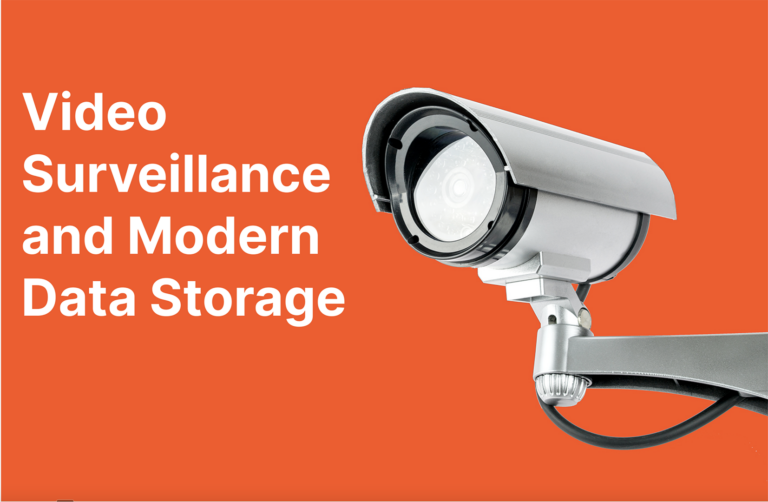Video surveillance often plays the hero in a crime drama, serving up a crucial piece of critical evidence just in time to help law enforcement investigators and prosecutors bring bad actors to justice. However, the vital role of video surveillance in promoting public safety is far from fiction. A recent global survey report for the law enforcement industry found that nearly two-thirds (63%) of cases today include digital evidence, such as video surveillance footage, as part of an investigation.¹
Law enforcement agencies certainly aren’t the only ones collecting digital evidence with the goal of improving safety, though. Organizations at the local, national, and international levels rely on high-resolution video surveillance software, systems, and devices every day to support their work to increase security, reduce crime rates, enhance transportation safety, and more. Here are just some examples:
- Many K-12 schools and districts use video surveillance to help deter crime and violence on their campuses and in their facilities. In fact, nearly all (97%) public schools in the United States use security cameras to control access to buildings, according to the National Center for Education Statistics.²
- Casinos rely on video surveillance to keep a close eye on the activities of patrons and employees, 24/7, on gaming floors and in other areas throughout the complex. In addition to high-definition video gathered from hundreds of cameras, many larger casino operators use facial recognition technology to spot known bad actors, including those wearing disguises, and advanced artificial intelligence (AI) and predictive analytics, to help keep staffing levels in sync with patron traffic.
- Retailers have long employed video surveillance on the store floor to help combat “shrink” due to issues such as theft and fraud, including from “boosting” (organized retail crime), which has been skyrocketing.³
But some leading retailers are also modernizing their surveillance in manufacturing plants and retail distribution centers to reduce crime in those facilities, monitor incidents that can lead to product damage, and keep staff and operations more secure. - Departments of transportation at the state and local level use video surveillance to support everything from toll collection and license plate scanning to traffic control and management to monitoring of weather conditions. Live video streams are critical for situational awareness, incident response, infrastructure monitoring, and much more—and this footage is often valuable to the work of other agencies, such as the Department of Homeland Security, local and federal law enforcement organizations, and even the news media.
Despite the fact that video surveillance is so widely used today, managing video data is a major challenge for even the most well-resourced organizations. Millions of cameras around the globe, many of them running 24x7x365, generate a staggering amount of unstructured data. For any organization that wants to put raw video footage to practical use—often, in real time—trying to do it on spinning-disk drives is anything but practical.
Meanwhile, the video surveillance technology space is evolving rapidly to include more data-intensive solutions like intelligent video surveillance (IVS) for increasing situational awareness and biometric security systems for identity verification.
Not surprisingly, AI capabilities and real-time analytics are becoming must-haves for any organization that wants to increase data management efficiency and unlock the full value of video to enhance security and safety. Tools like AI-driven video content analytics (VCA) technology, for example, can reduce incident investigation time dramatically by processing video from multiple sources fast and breaking it down into objects and behaviors that appeared in the footage.⁴
However, without modern IT infrastructure in place, organizations in the public sector and elsewhere are constrained by the limitations of legacy technologies. Meanwhile, data keeps piling up. Consider the plight of law enforcement agencies: In the global survey report mentioned at the top of this post, 62% of law enforcement agency managers reported that managing digital evidence—which includes video from CCTV systems, body-worn cameras (BWCs) and police car dashcams, traffic surveillance cameras, and even robotaxis⁵—is one of the greatest challenges their departments face today.
Several factors contribute to this issue, but top among them is the fact that many agencies have yet to transform digitally—at all, or enough.
All-flash Storage: A Fundamental Step toward Making a Digital Transformation Leap
Here’s why digital transformation is critical to getting a handle on the management of video surveillance data: Disk-based and outdated, on-premises storage is costly to maintain and inhibits analysts from quickly drawing actionable insights from massive amounts of raw, unstructured data like video. Searching manually for a specific event in a videotape can take many hours, even if an analyst knows what to look for. It can also easily lead to errors and missed evidence in investigations.
AI and advanced data analytics tools are a must for providing critical, accurate, and real-time insights that enable faster and more effective responses to crime, threats, accidents, and other emergencies. Consider research from McKinsey that indicates technologies such as AI can help cities reduce crime by 30%-40% and reduce the response time for emergency services by 20%-35%.⁶ Enhanced use can help video surveillance live up to its promise of improving public safety—and make data-driven smart cities collecting this type of data more secure.
There is a straightforward and fundamental step that public safety organizations, schools and districts, and retail, gaming, and other businesses can take now to accelerate digital transformation so they can adopt AI and other technologies to help them quickly access, search, and interpret video surveillance data. They can change how they store that raw data. Implementing a modern data storage solution like the FlashArray™ platform from Pure Storage is the gateway to unleashing the full value of video data as an intelligence asset for increasing safety and security.
Get more details on how Pure Storage data services and management solutions help public safety organizations create smarter infrastructure for video surveillance and AI.
Enabling a Safer Future by Improving Digital Evidence Management Today
Decreasing reliance on disk-based storage solutions to embrace all-flash array storage infrastructure can help organizations simplify and modernize their operations while making the most of existing investments and enabling real-time analytics and AI. With an IT infrastructure backbone that includes modern data storage that is cost-effective, reliable, and sustainable, organizations in the public and private sectors can invest in future-forward technologies like AI while maximizing resources and meeting stakeholder expectations.
With FlashArray, organizations can feel confident adopting a storage solution that delivers 99.9999% uptime and is certified by the rigorous testing process of Genetec, a global provider of world-class video surveillance and other technology for the physical and public safety industries.⁷ Pure Storage all-flash arrays also come with built-in features for keeping data secure, including end-to-end data protection (in-flight and at rest) and petabyte-scale recovery. This helps organizations meet data privacy and compliance mandates related to digital evidence like video. Then, when the time comes to use it—whether it’s to prevent crime, investigate incidents, or prosecute criminals—the availability and integrity of that data can be assured.
Create a Modern, Intelligence-driven Public Safety Organization with Pure Storage
Pure Storage helps organizations in the public and private sectors take critical steps toward harnessing the full value of their data, including raw, unstructured data like video that is only multiplying in volume and growing in complexity. Our solutions for data and analytics provide these organizations with the tools and capabilities they need to let go of legacy solutions that prevent them from keeping pace with modern security and safety needs and reducing risk for the public, their employees, and their operations.
Find out more about our simplified data storage solutions that can help improve surveillance analytics and outcomes.
¹ https://cellebrite.com/en/2022-industry-trends-form/
² https://nces.ed.gov/fastfacts/display.asp?id=334
³ https://www.investors.com/news/retail-theft-nears-100-billion-as-violence-organized-crime-take-a-toll/
⁴ https://www.briefcam.com/resources/blog/how-artificial-intelligence-is-revolutionizing-investigation-for-law-enforcement/
⁵ https://techcrunch.com/2023/06/30/police-want-robotaxi-video-footage-to-help-solve-crimes/
⁶ https://www.mckinsey.com/capabilities/operations/our-insights/smart-cities-digital-solutions-for-a-more-livable-future
⁷ https://www.genetec.com/industries/public-safety
![]()






